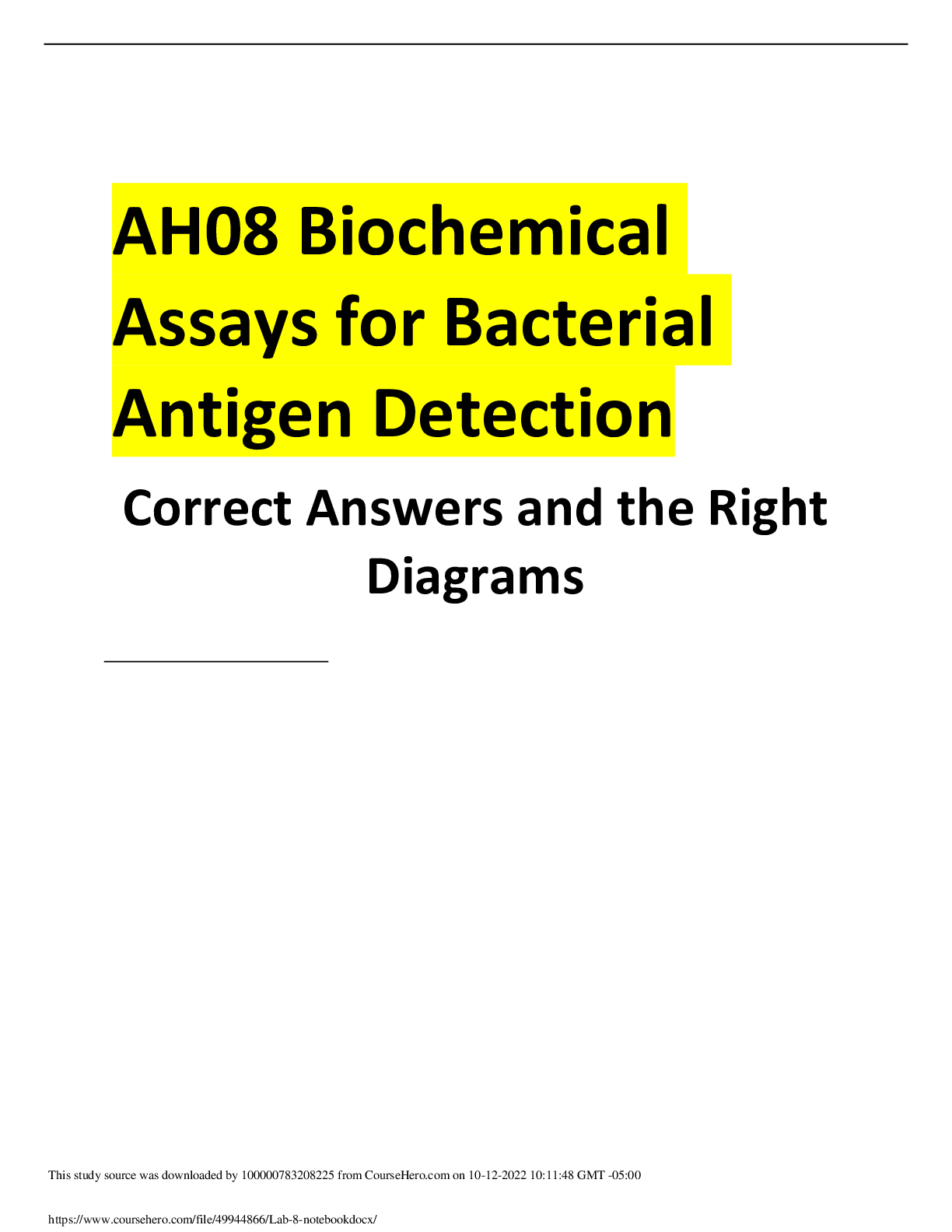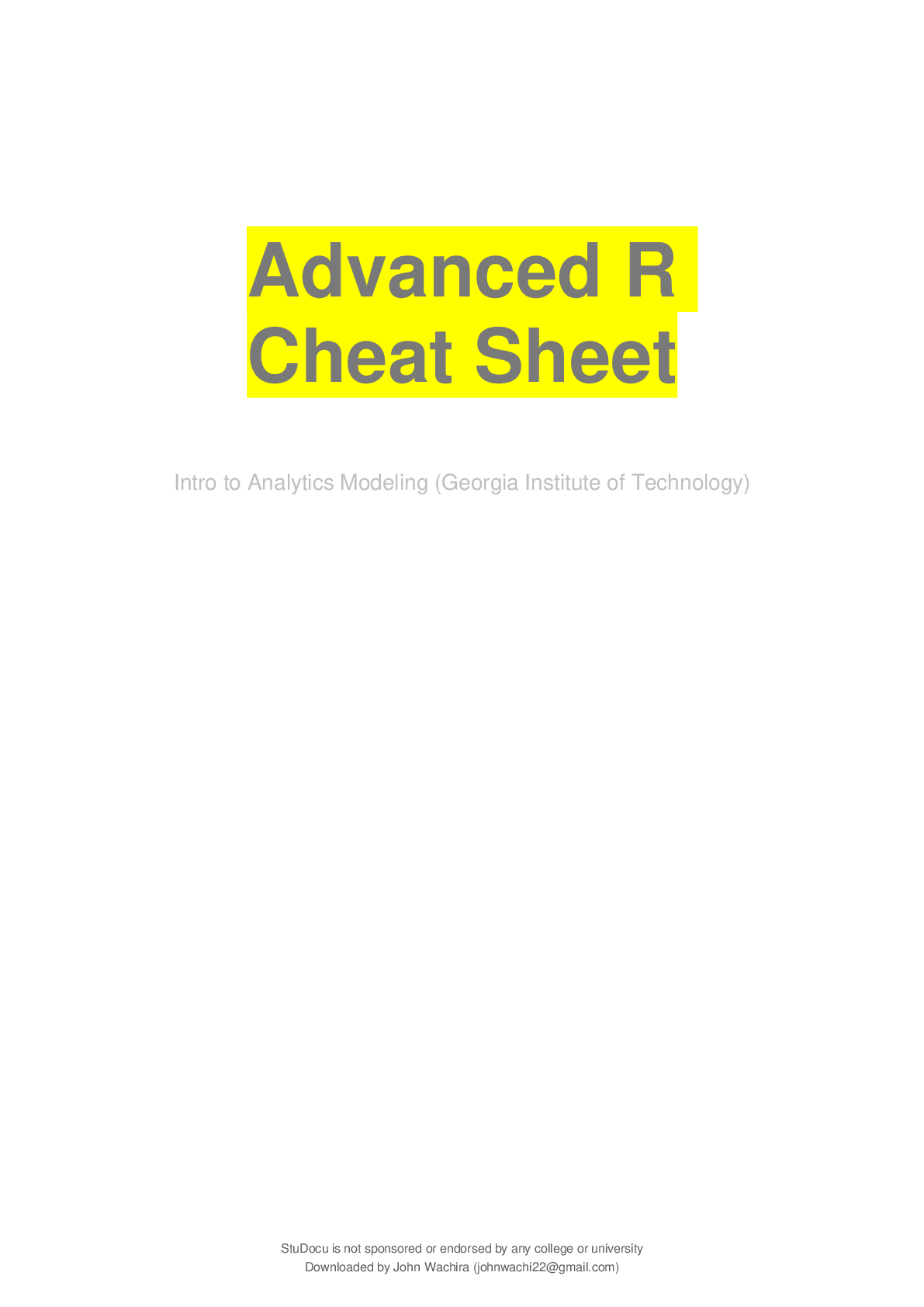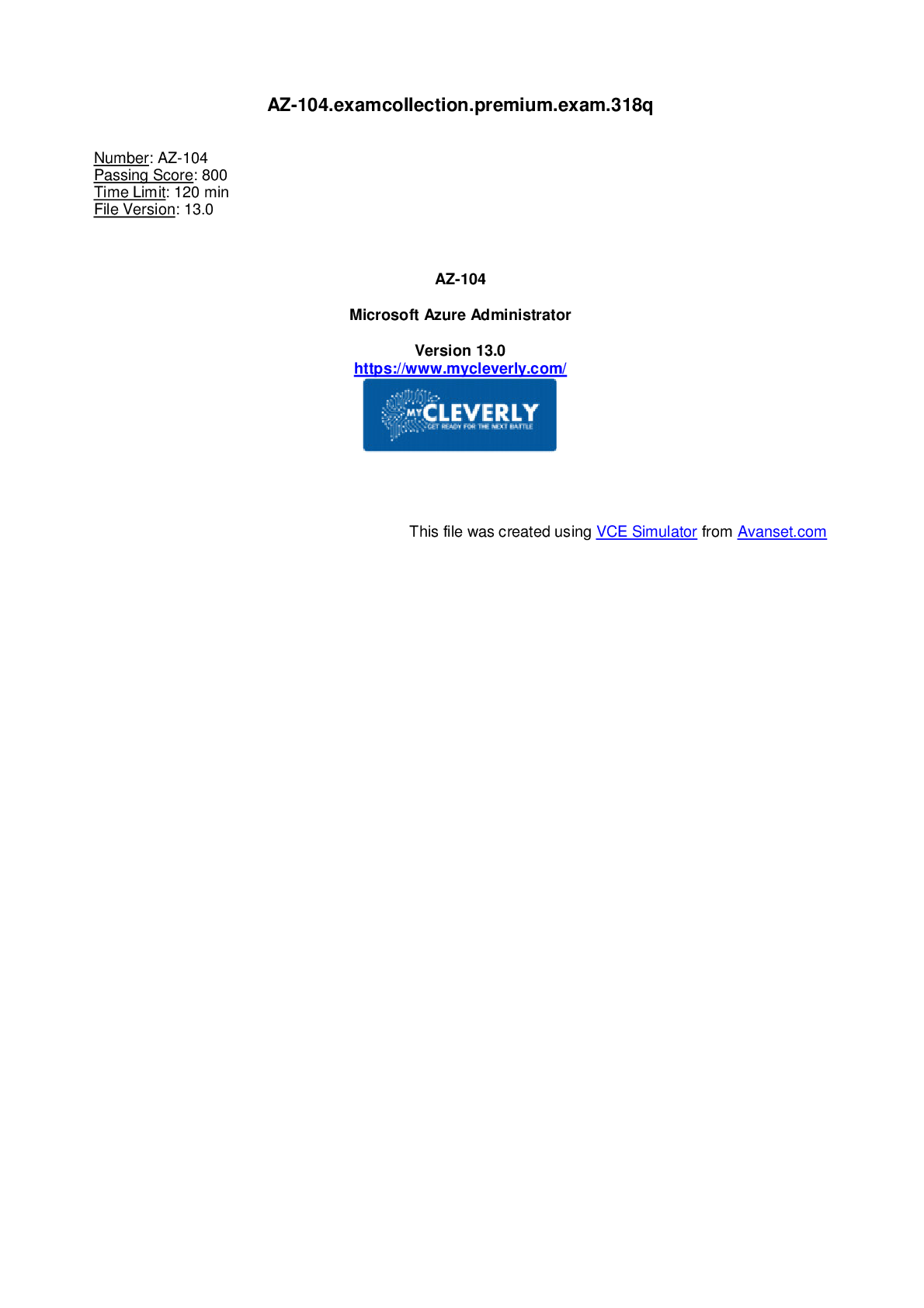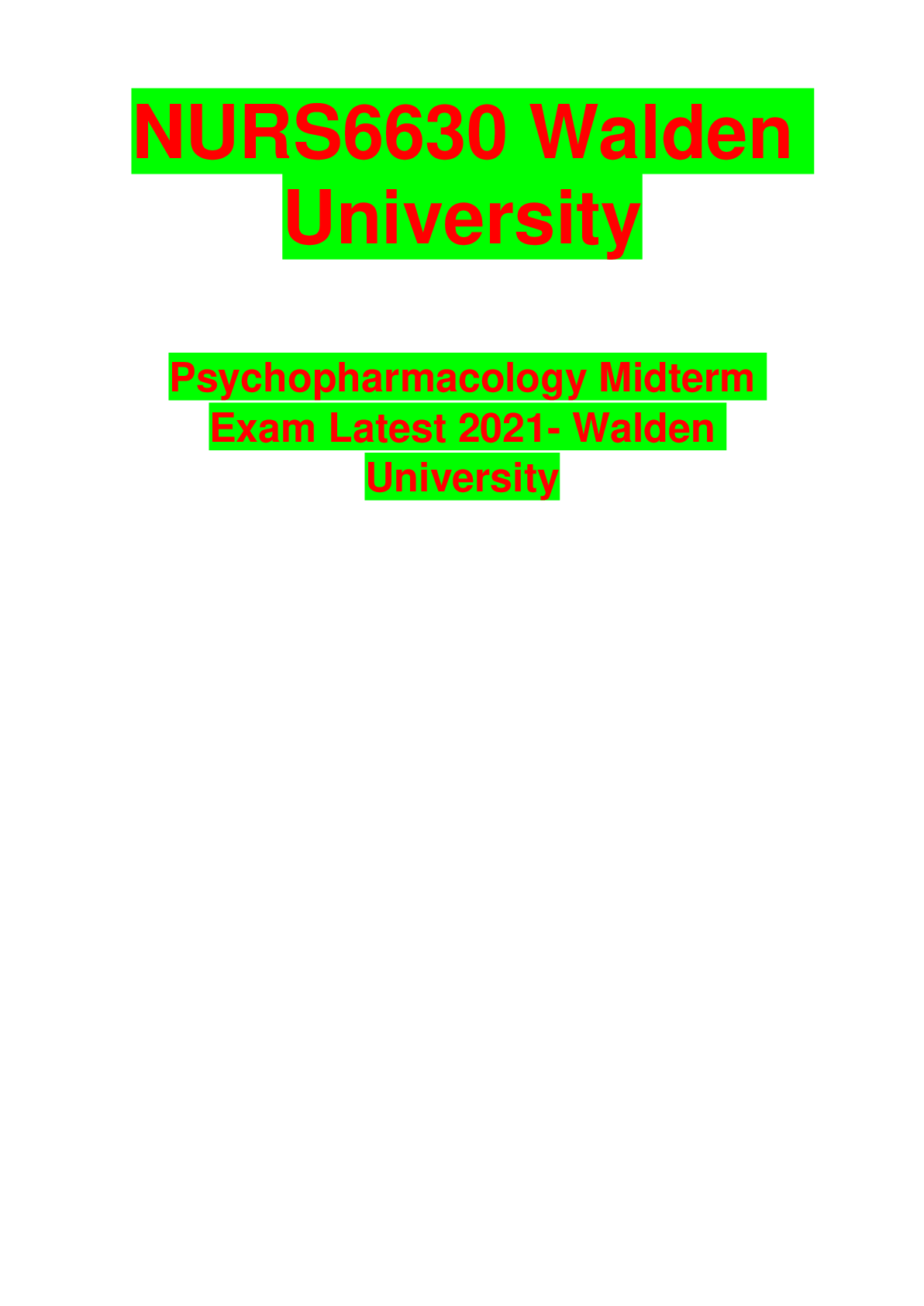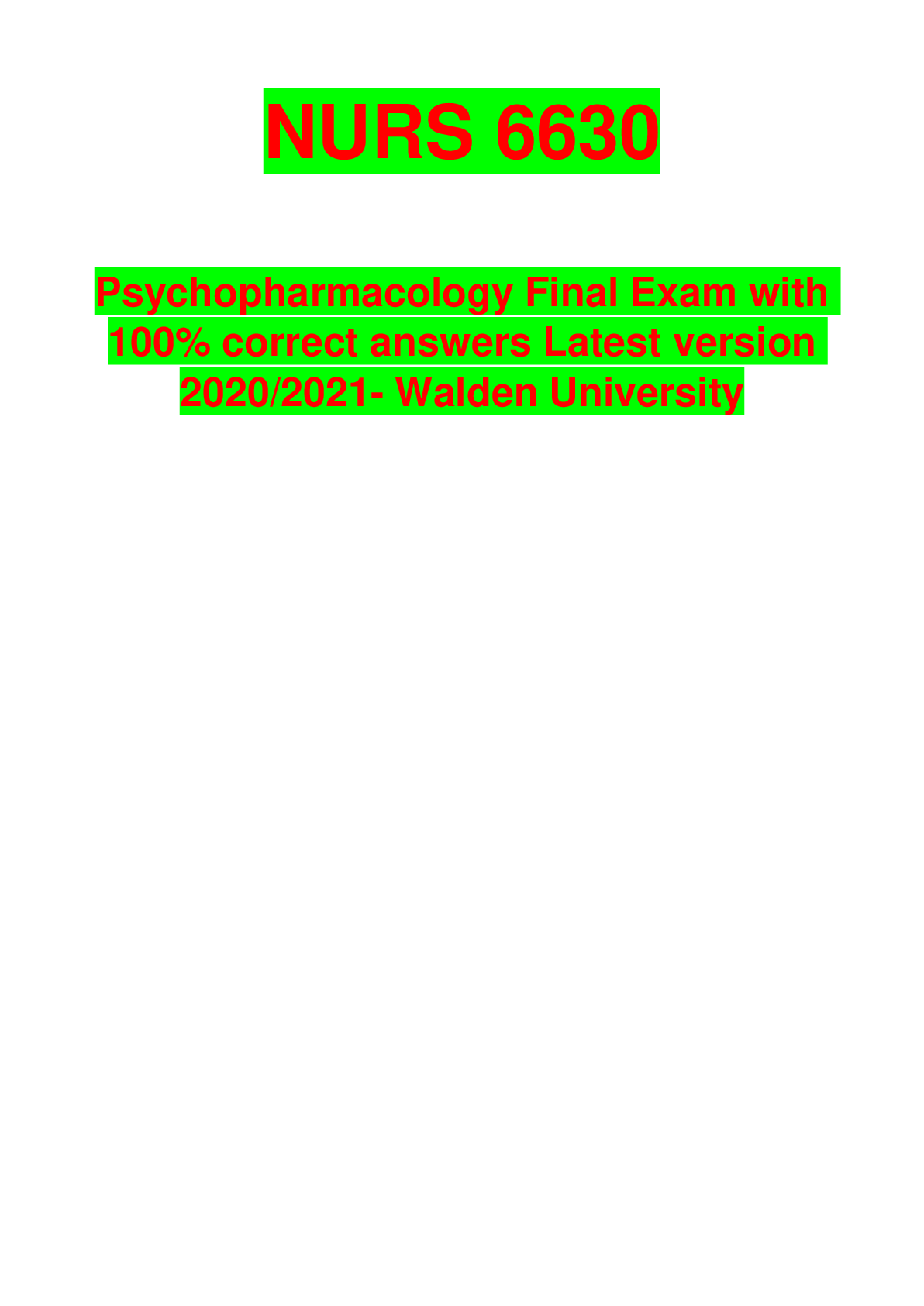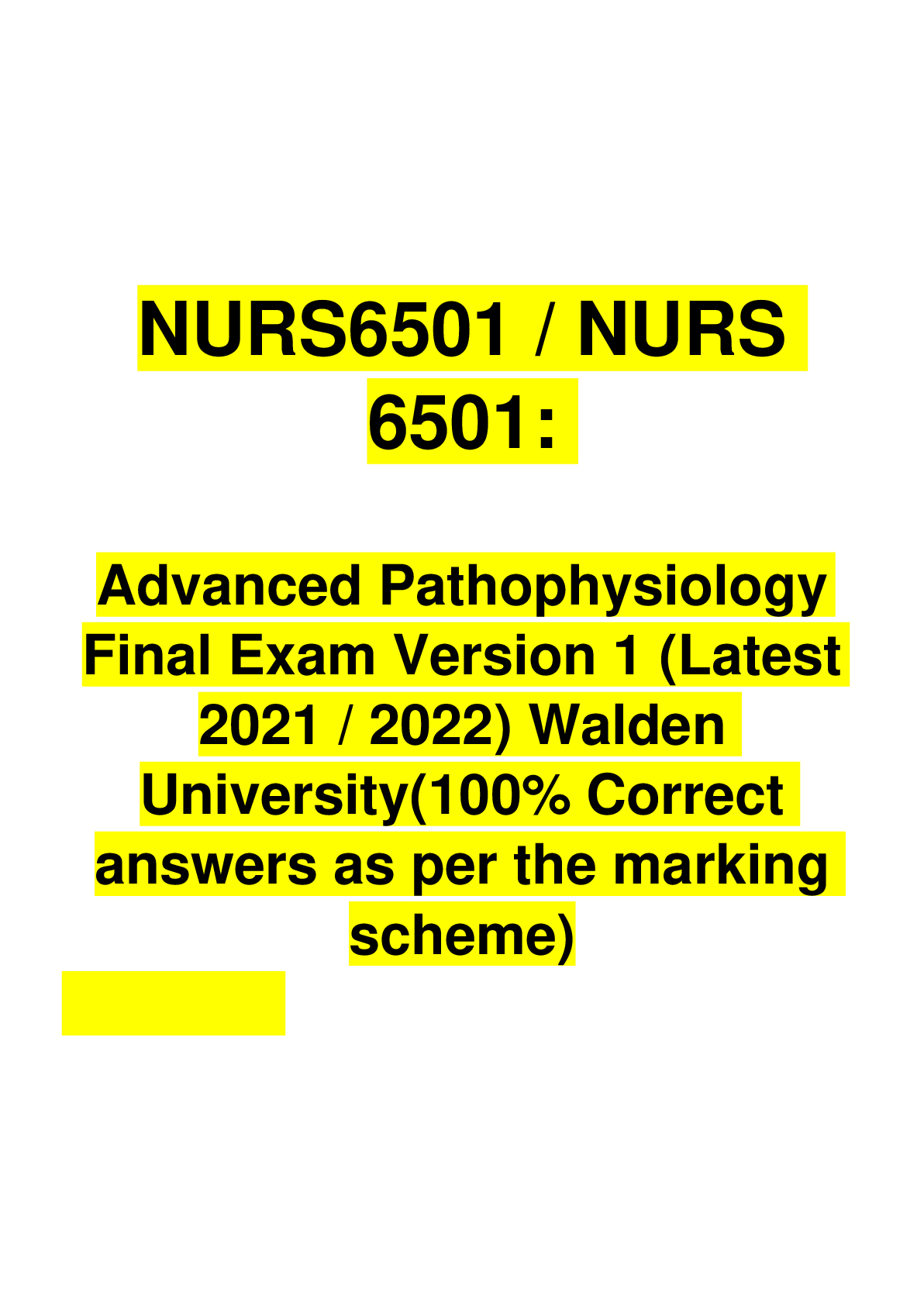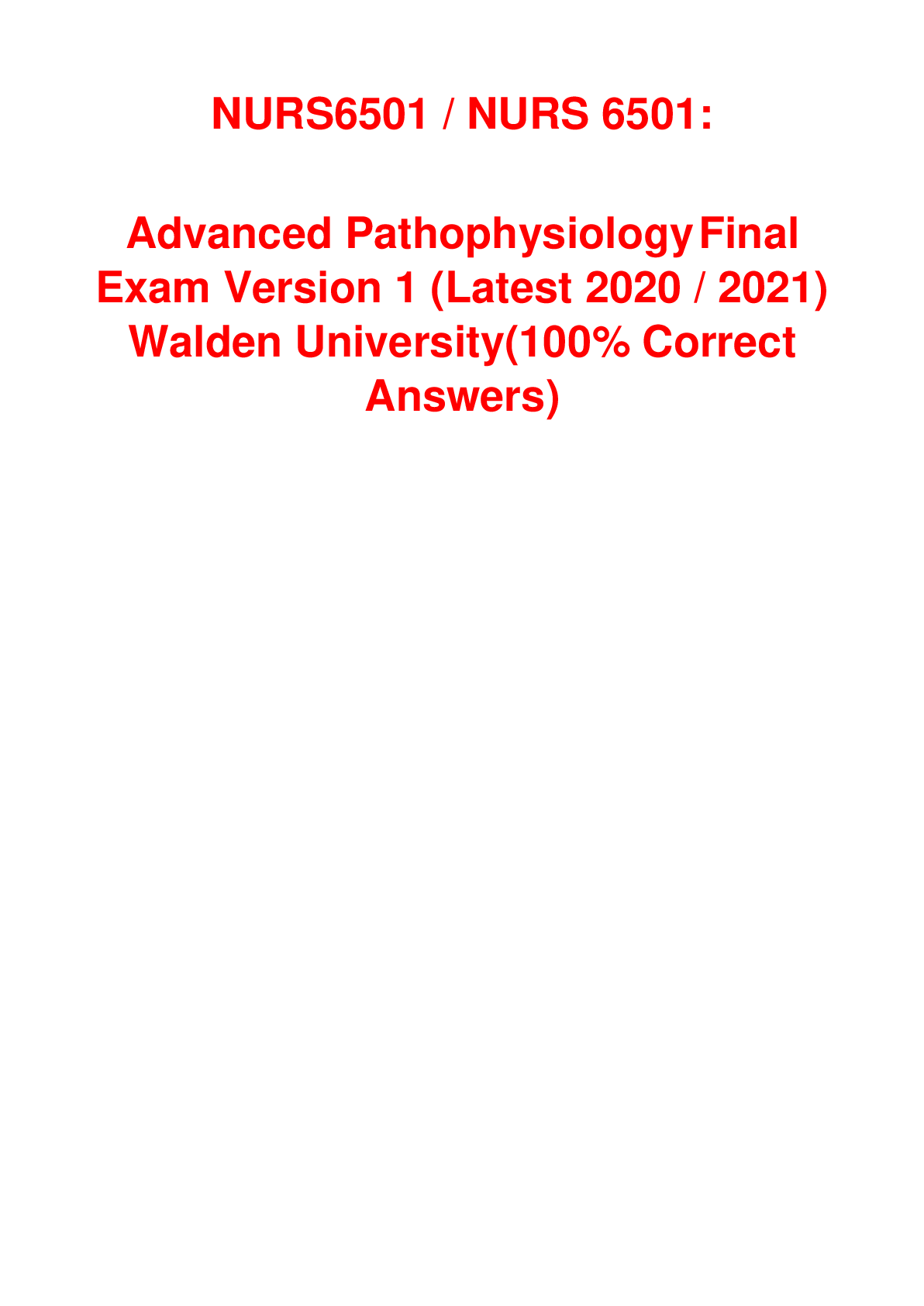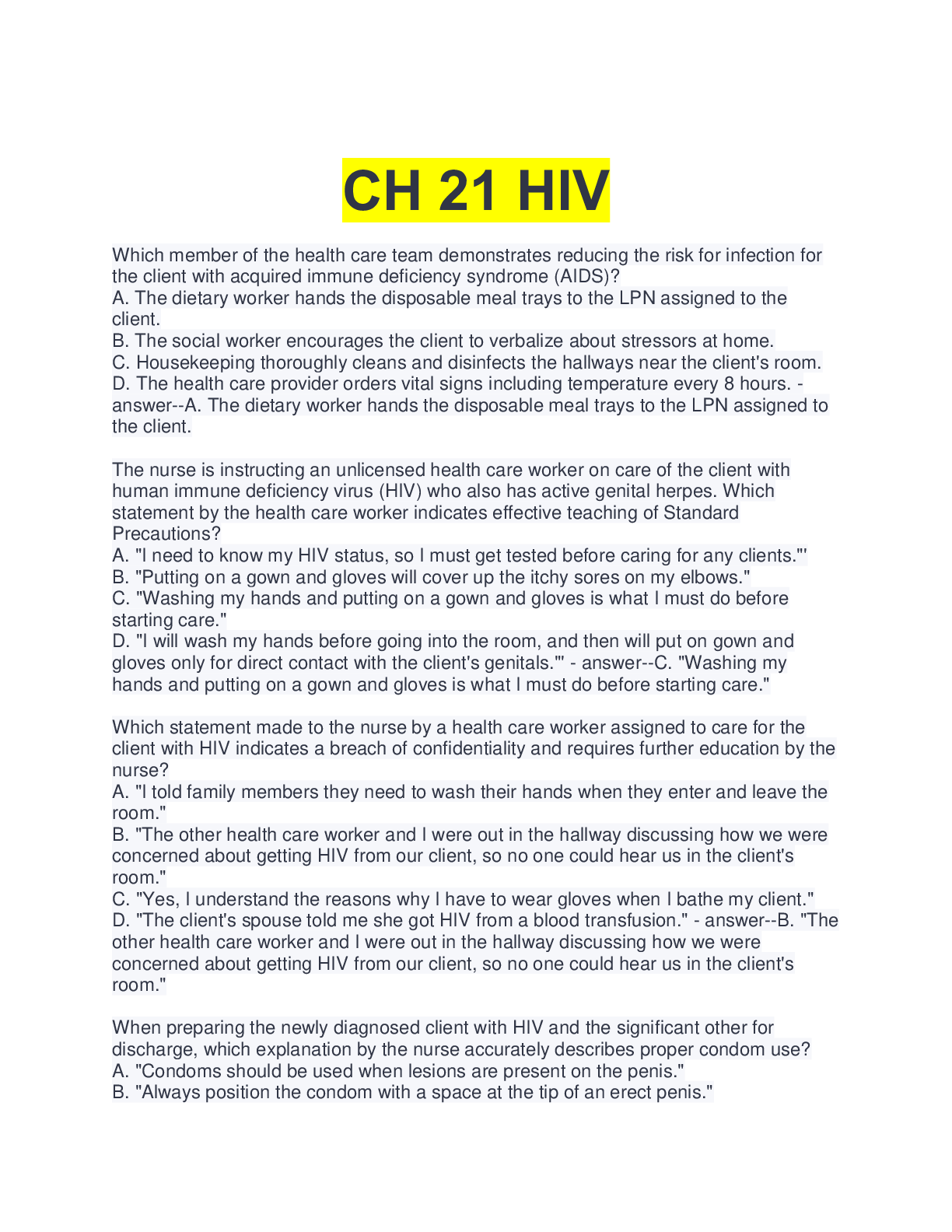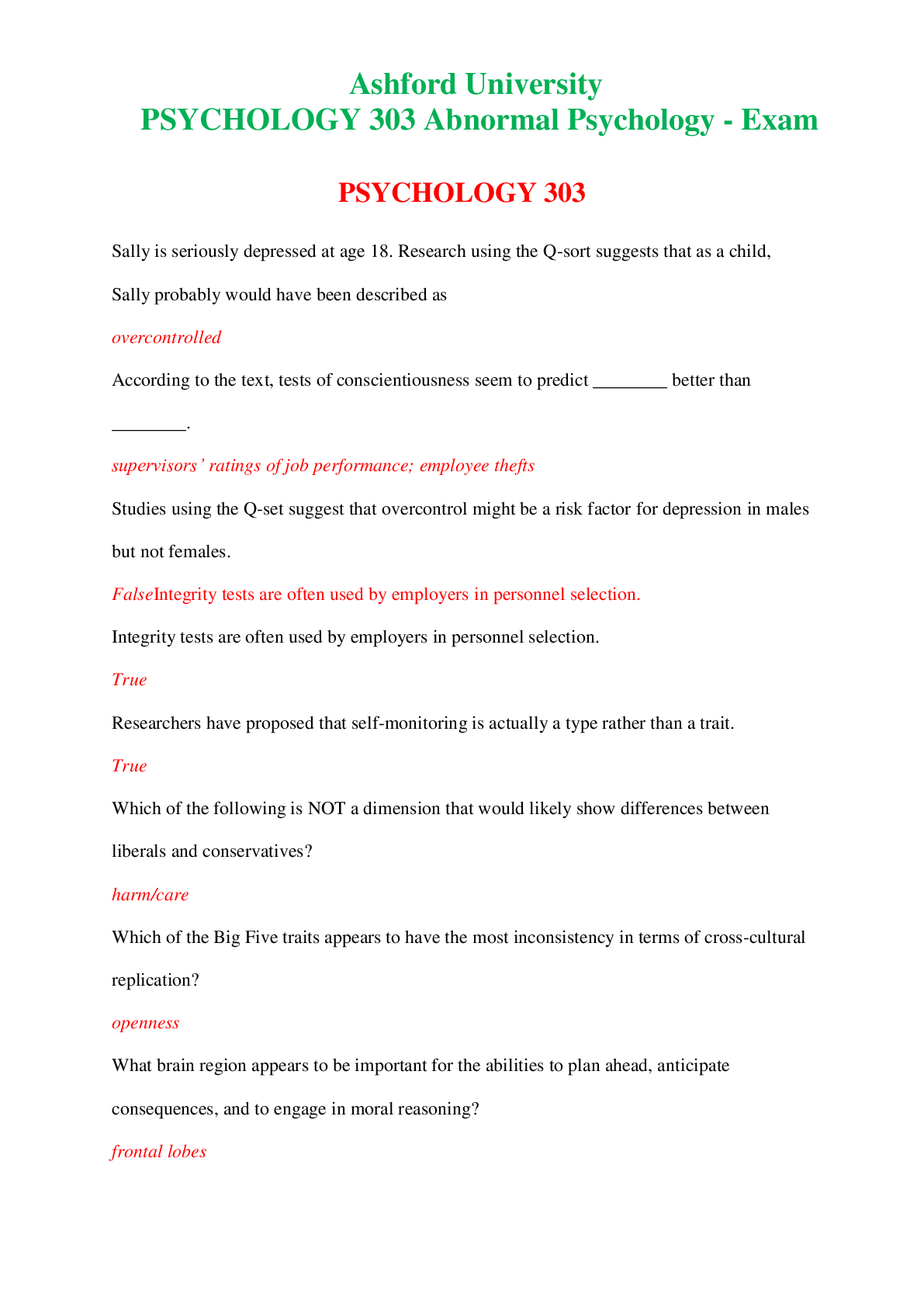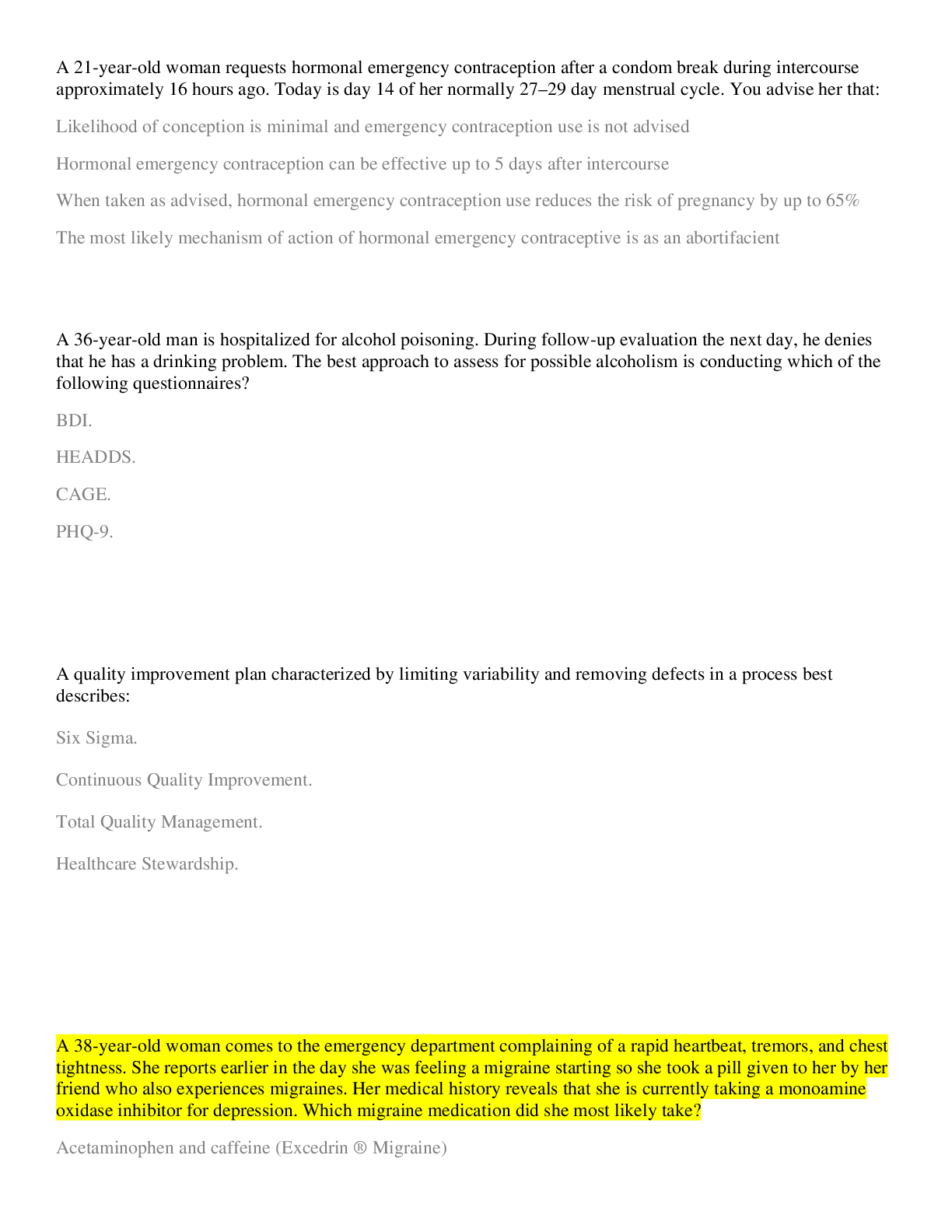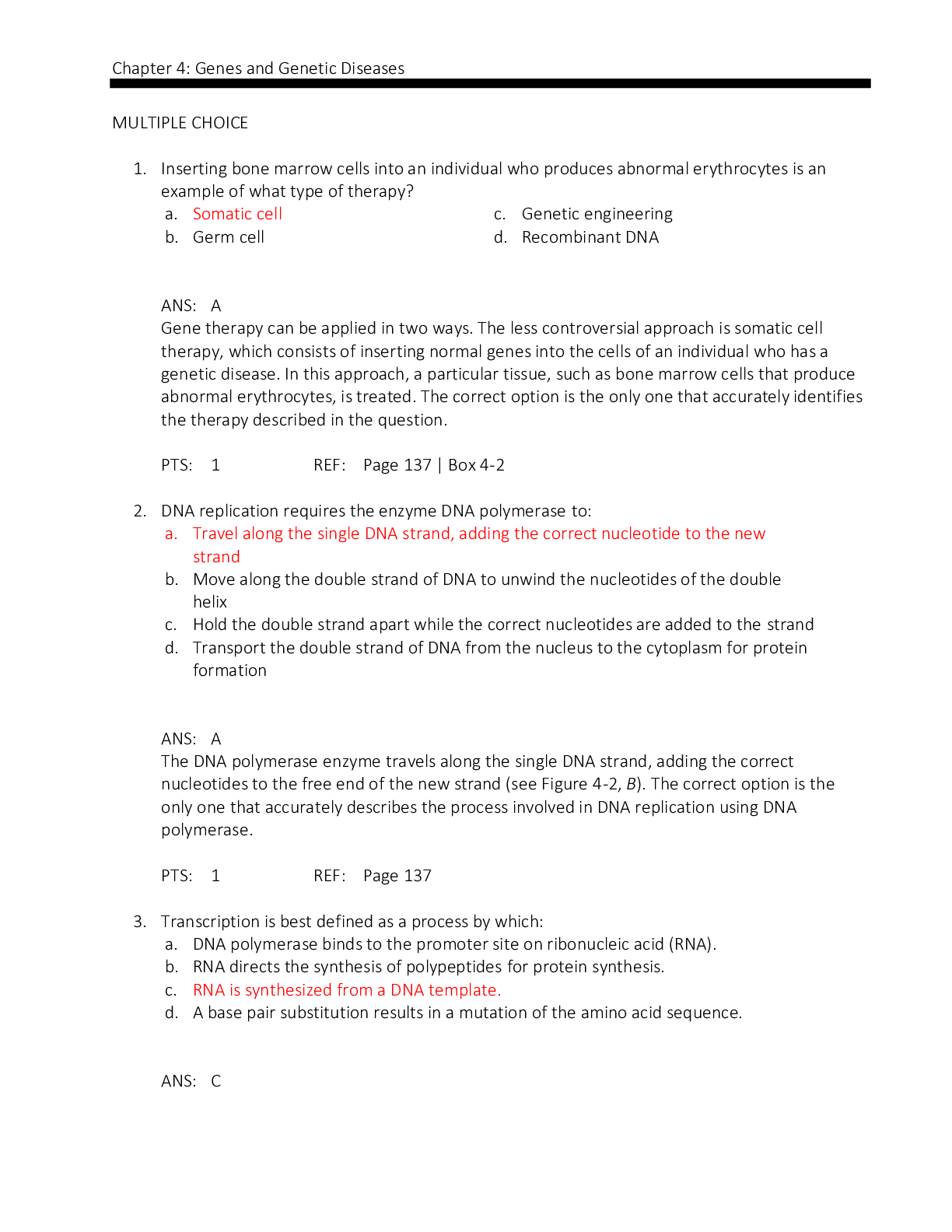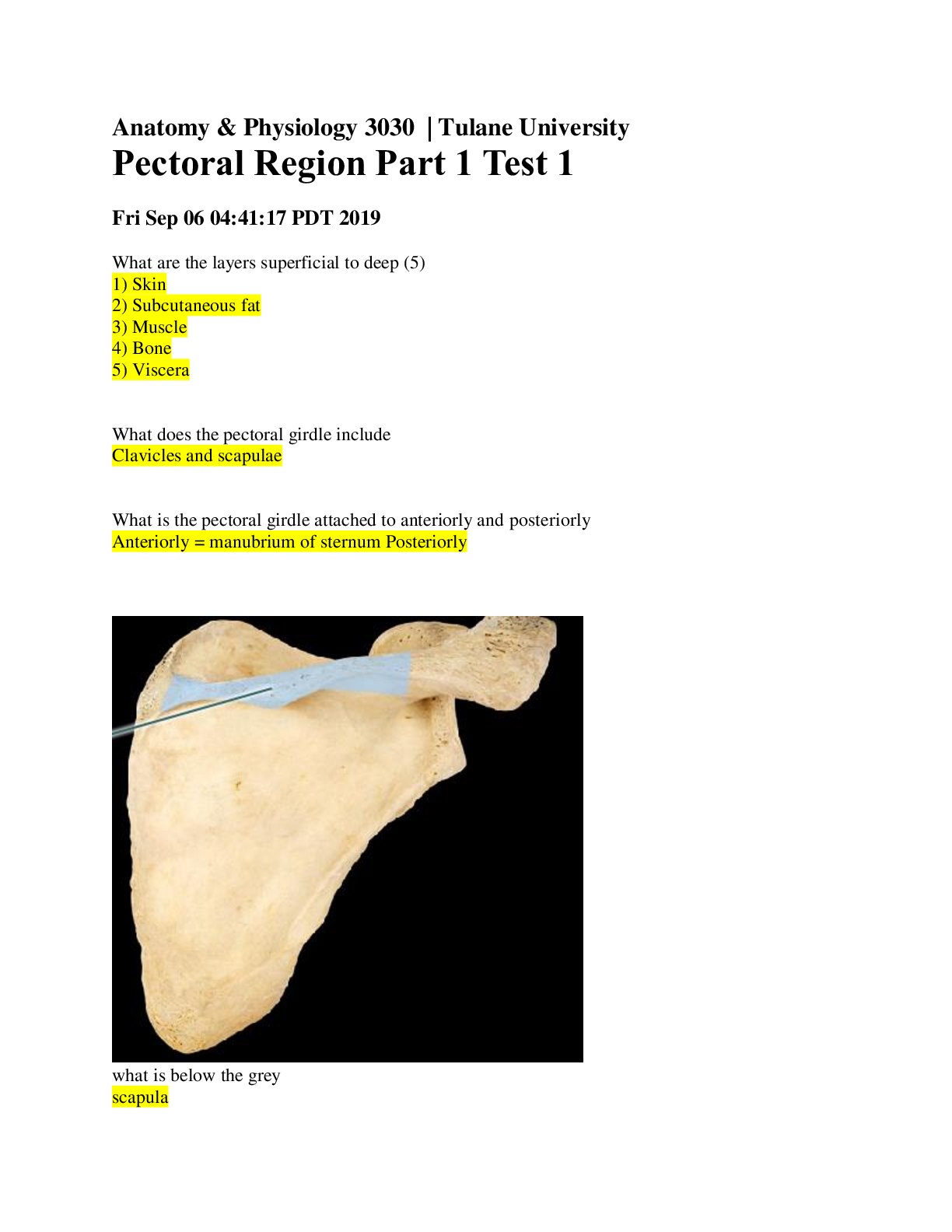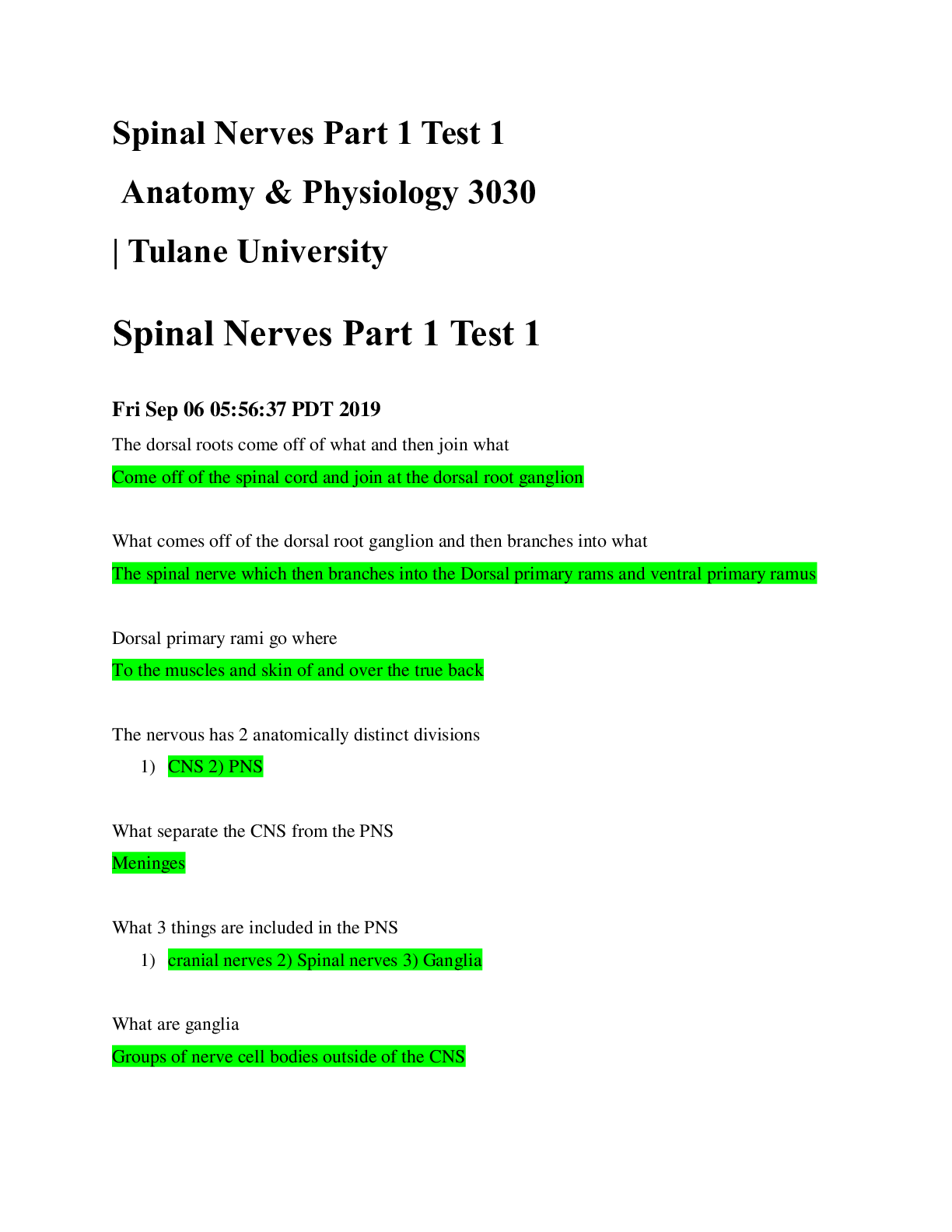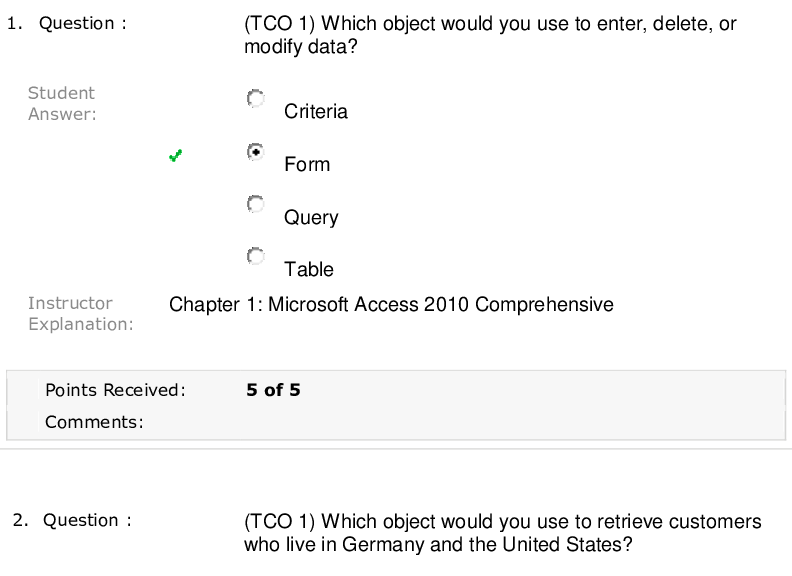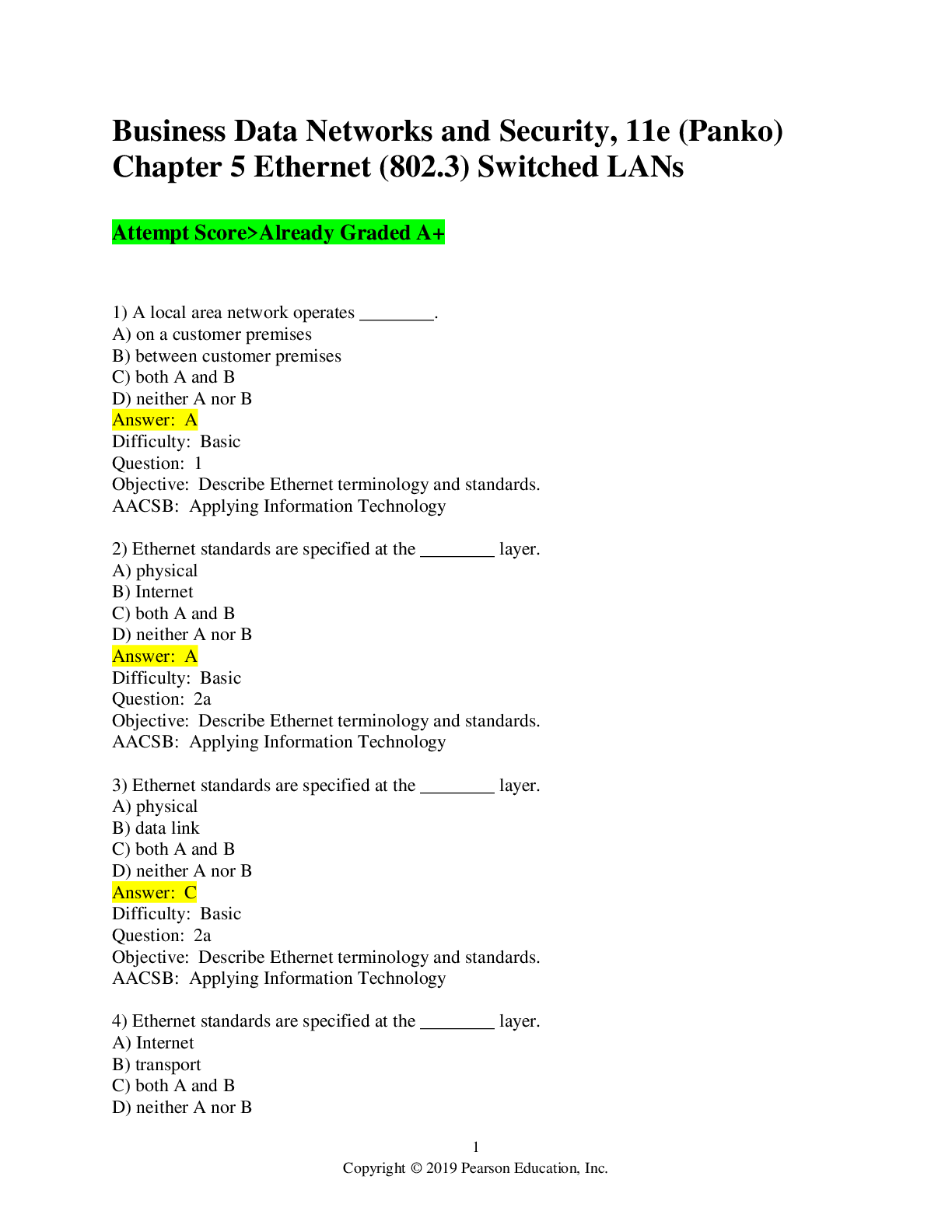Test Bank for Seeleys Anatomy and Physiology 11th edition by vanputte
Document Content and Description Below
Test Bank for Seeleys Anatomy and Physiology 11th edition by vanputte Medical Technology (Notre Dame of Dadiangas University) ... StuDocu is not sponsored or endorsed by any college or university Downloaded by John Wachira ([email protected]) http://downloadlink.org/product/test-bank-for-seeleys-anatomy-and-physiology-11th-edition-by-vanputte/ Chapter 02 - The Chemical Basis of Life Chapter 02 The Chemical Basis of Life Multiple Choice Questions 1. The amount of matter in an object is its A. element. B. mass. C. ionic charge. D. atomic number. E. weight. Bloom's Level: 1. Remember HAPS Objective: C01.01d Distinguish among the terms atomic number, mass number and atomic weight with respect to the structure of an atom. HAPS Topic: Module C Chemistry and Cell Biology Review Learning Outcome: 02.01A. Define matter, mass, and weight. Section: 02.01 Topic: Atoms and molecules Type: Study Guide 2. The three forms of matter are: A. air, water, and solids. B. solids, liquids, and gases. C. blood, bone, and air. D. vapor, water, and solid. Bloom's Level: 1. Remember HAPS Objective: C01.01a With respect to the structure of an atom: Describe the charge, mass, and relative location of electrons, protons and neutrons. HAPS Topic: Module C Chemistry and Cell Biology Review Learning Outcome: 02.01A. Define matter, mass, and weight. Section: 02.01 Topic: Atoms and molecules Topic: Chemistry and cell biology Type: Study Guide 2-1 Copyright © 2017 McGraw-Hill Education. All rights reserved. No reproduction or distribution without the prior written consent of McGraw-Hill Education. 3. The four most abundant elements in the human body are A. calcium, hydrogen, sodium, and potassium. B. carbon, oxygen, magnesium, and zinc. C. carbon, hydrogen, oxygen, and iron. D. carbon, hydrogen, oxygen, and nitrogen. E. carbon, sulfur, calcium, and potassium. Bloom's Level: 1. Remember HAPS Objective: C01.03 Compare and contrast the terms atoms, molecules, elements, and compounds. HAPS Topic: Module C Chemistry and Cell Biology Review Learning Outcome: 02.01B. Distinguish between an element and an atom and state the four most abundant elements in the body. Section: 02.01 Topic: Atoms and molecules Topic: Chemistry and cell biology Type: Study Guide 4. The smallest particle of an element that still exhibits the chemical characteristics of that element is a(n) A. proton. B. atom. C. orbital. D. chemical bond. E. electron. Bloom's Level: 1. Remember HAPS Objective: C01.03 Compare and contrast the terms atoms, molecules, elements, and compounds. HAPS Topic: Module C Chemistry and Cell Biology Review Learning Outcome: 02.01B. Distinguish between an element and an atom and state the four most abundant elements in the body. Section: 02.01 Topic: Atoms and molecules Topic: Chemistry and cell biology Type: Study Guide 2-2 Copyright © 2017 McGraw-Hill Education. All rights reserved. No reproduction or distribution without the prior written consent of McGraw-Hill Education. 5. Subatomic particles located around the nucleus of an atom are A. electrons. B. neutrons. C. photons. D. protons. E. neutrinos. Bloom's Level: 1. Remember HAPS Objective: C01.01a Describe the charge, mass, and relative location of electrons, protons and neutrons with respect to the structure of an atom. HAPS Topic: Module C Chemistry and Cell Biology Review Learning Outcome: 02.01C. Name the subatomic particles of an atom, and indicate their mass, charge and location in an atom. Section: 02.01 Topic: Atoms and molecules Topic: Chemistry and cell biology Type: Study Guide 6. Electrons A. are the subatomic particles most involved in bonding behavior of atoms. B. have a positive charge of one. C. comprise the majority of the mass of an atom. D. do not participate in the bonding of atoms. E. are located in the nucleus of an atom. Bloom's Level: 1. Remember HAPS Objective: C01.01a Describe the charge, mass, and relative location of electrons, protons and neutrons with respect to the structure of an atom. HAPS Objective: C01.01b Relate the number of electrons in an electron shell to an atoms chemical stability and its ability to form chemical bonds with respect to the structure of an atom. HAPS Topic: Module C Chemistry and Cell Biology Review Learning Outcome: 02.01C. Name the subatomic particles of an atom, and indicate their mass, charge and location in an atom. Section: 02.01 Topic: Atoms and molecules Topic: Chemistry and cell biology 2-3 Copyright © 2017 McGraw-Hill Education. All rights reserved. No reproduction or distribution without the prior written consent of 7. X-rays can be used to view bones because A. x-rays can not pass through bone. B. x-rays pass through bone. C. x-rays react with bone. D. bones are less dense than soft tissue. [Show More]
Last updated: 1 year ago
Preview 1 out of 95 pages

Buy this document to get the full access instantly
Instant Download Access after purchase
Add to cartInstant download
We Accept:

Also available in bundle (1)

Solutions Test Bank For Seeley's Anatomy & Physiology 12th Edition By VanPutte
Solutions Test Bank For Seeley's Anatomy & Physiology 12th Edition By VanPutte
By Best Tutor 1 year ago
$20
3
Reviews( 0 )
$9.00
Document information
Connected school, study & course
About the document
Uploaded On
Oct 01, 2022
Number of pages
95
Written in
Additional information
This document has been written for:
Uploaded
Oct 01, 2022
Downloads
0
Views
57

.png)
